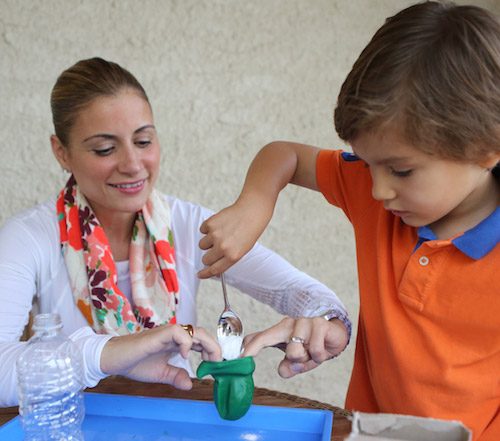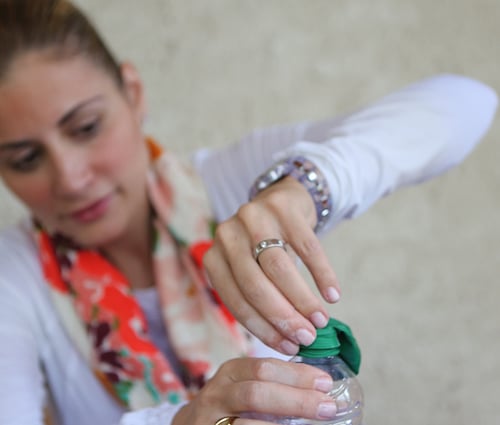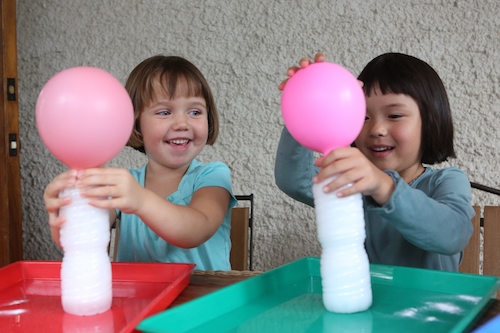Whether things change color, change texture, or send bubbles shooting into the air, chemical reactions are a fun way to introduce your children to science. And if your child has been studying chemical reactions in class already, they'll love doing this easy, at-home STEM experiment with you.
Plus, keep kids learning with our most popular workbooks under $7.
With this fun experiement you'll put chemical reactions to the test by transforming your kitchen table into a mad science lab. Your little chemists will love mixing baking soda and vinegar together inside a bottle to inflate ghosts, monsters, or any silly faces they’ve drawn on balloons.
Safety note: Vinegar can sting unprotected eyes, so sunglasses or safety goggles are highly recommended for this project.
What You’ll Need:
- Small plastic or glass bottle
- Balloon
- Funnel
- Measuring spoons
- Measuring cup
- Clothespin or food clip
- Permanent marker
- Baking soda
- Vinegar
What to Do:
1. Use permanent marker to draw the face of a jack-o’-lantern, a ghost, monster, or silly face on your balloon.
2. Measure 2 tablespoons of baking soda. Use the funnel to add the baking soda into the balloon.

3. Twist the neck of the balloon and clip it with a clothespin (or food clip).
4. Measure 4 ounces of vinegar. Use the funnel to add the vinegar to the bottle.
5. Fit the opening of the balloon over the mouth of the plastic or glass bottle.

6. Release the clothespin and hold the balloon up to allow the baking soda to drop into the bottle.
7. Watch your creation “come alive” with the help of a creepy chemical reaction!
The Science Behind the Fun
When baking soda and vinegar mix, a new acid is created. Almost right away, the acid breaks down into two parts: water and gas. Your balloon monster grows as it fills with the gas created from the chemical reaction!
Want to do another fun at-home experiement? How does making some elephant's toothpaste sound?
Shop for STEAM books and activities below. You can find all books and activities at The Scholastic Store.
© Quarry Books, 2016/Outdoor Science Lab for Kids. Featured Photos Credit: © Quarry Books. Find more experiments like this one at kitchenpantryscientist.com.